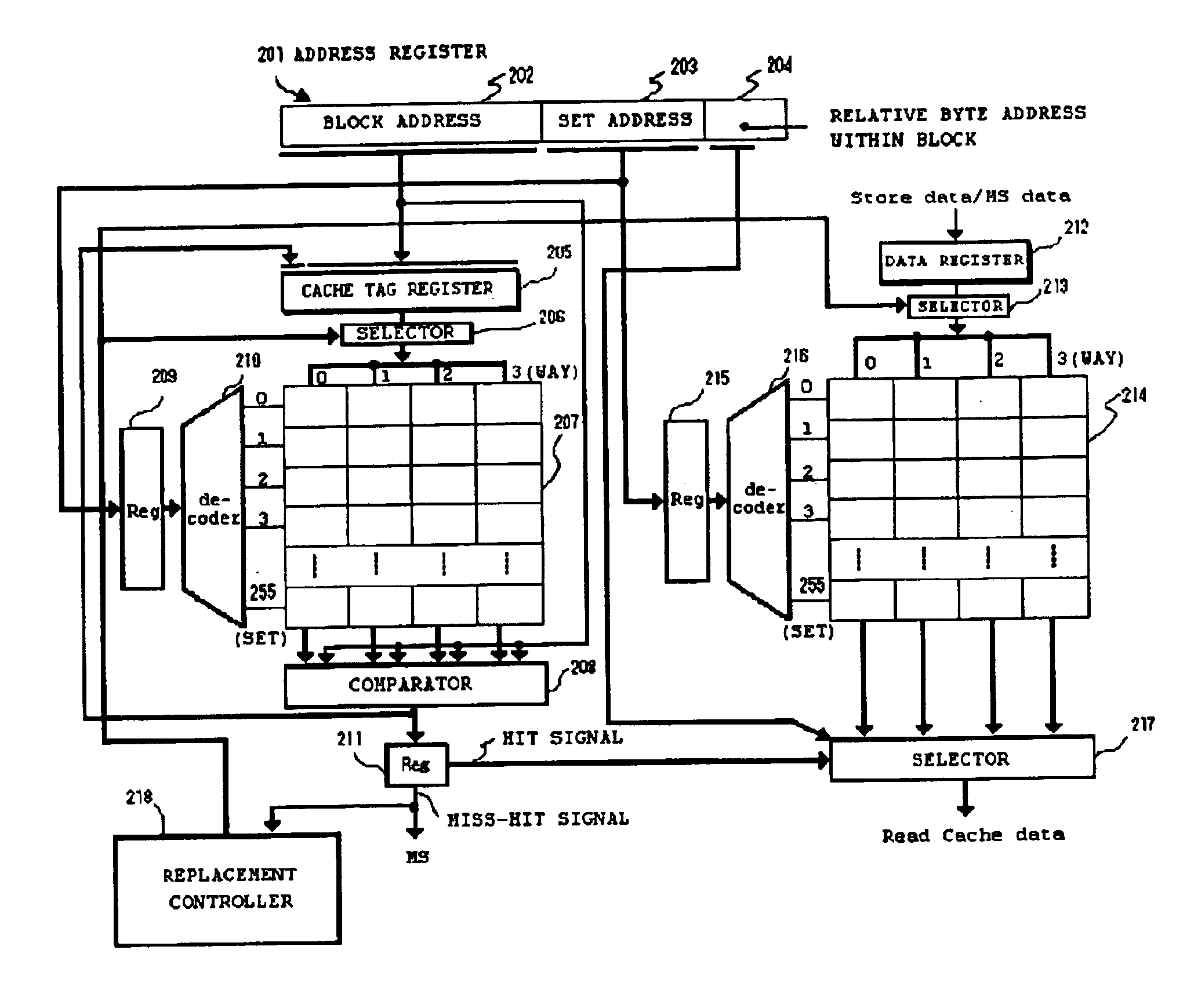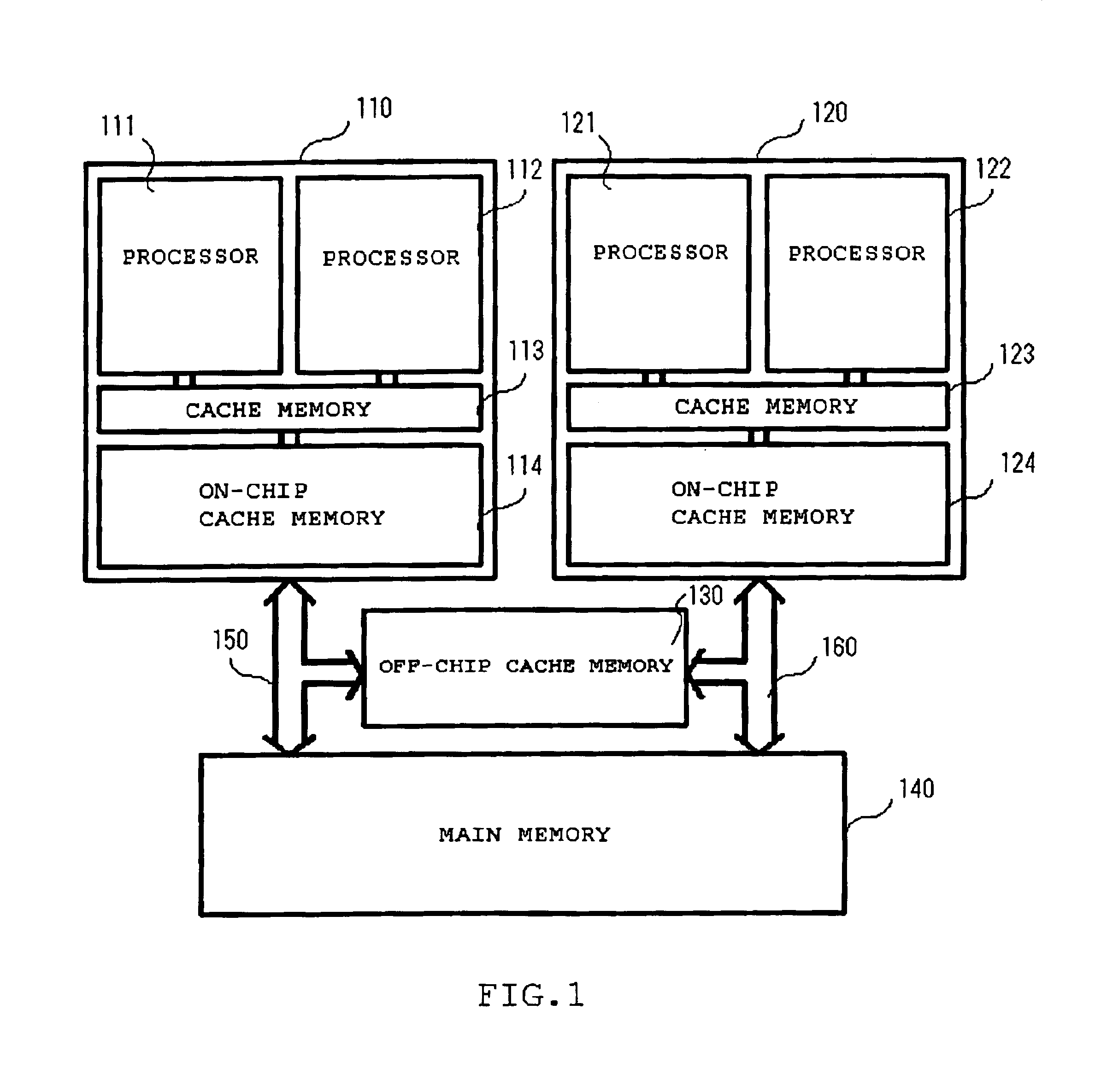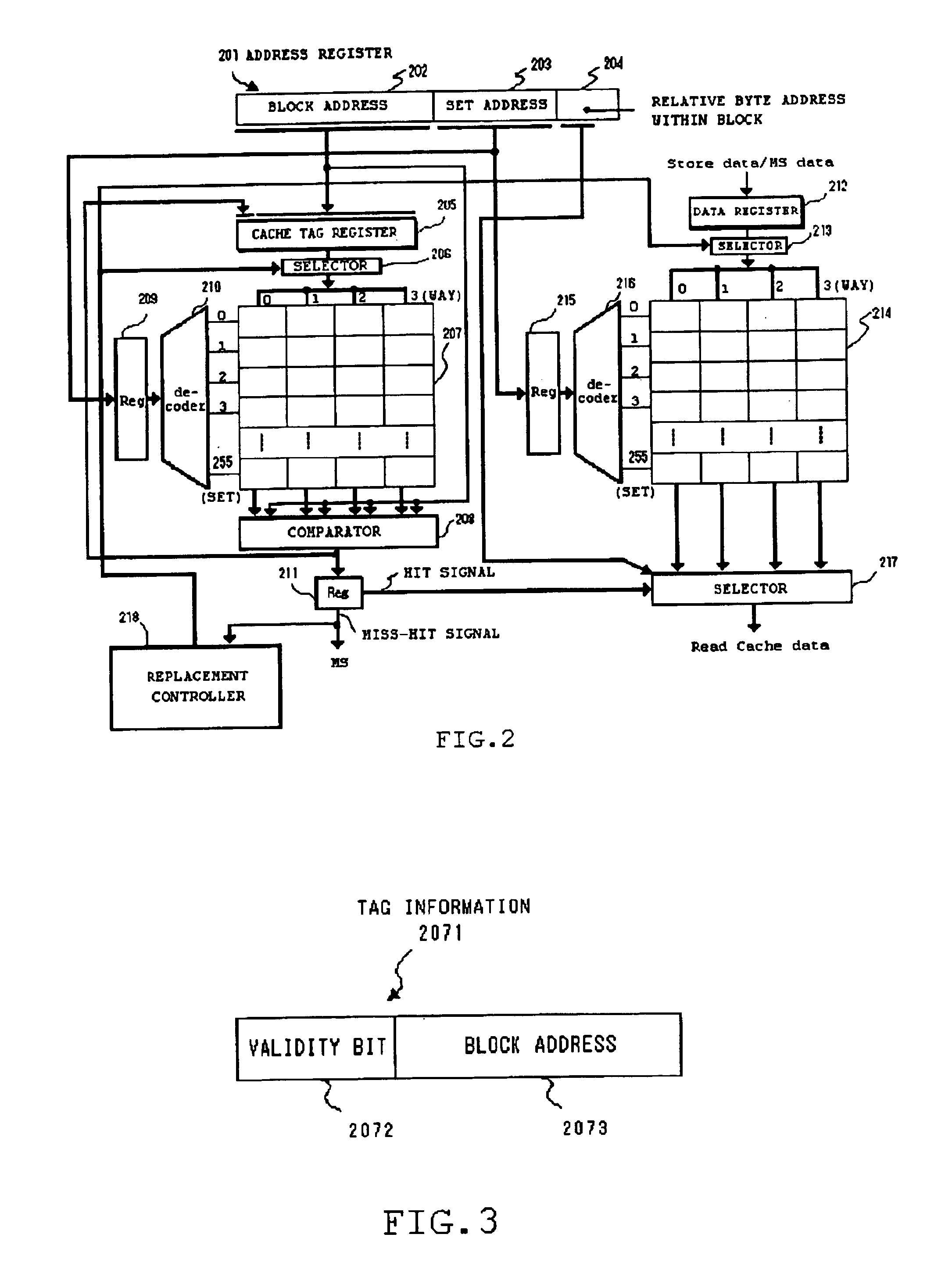Shared cache memory replacement control method and apparatus
a control method and memory technology, applied in the field of multiprocessor systems, can solve problems such as mishit (conflict-miss between processors) and slow the processing speed of multiprocessor systems
- Summary
- Abstract
- Description
- Claims
- Application Information
AI Technical Summary
Benefits of technology
Problems solved by technology
Method used
Image
Examples
Embodiment Construction
Referring to FIG. 1, a system according to the present invention includes on-chip multiprocessor systems 110 and 120, an off-chip cache memory 130, a main memory 140, and memory buses 150 and 160.
The on-chip multiprocessor system 110 includes processors 111 and 112, a cache controller 113, and an on-chip cache memory 114. The on-chip multiprocessor system 120 includes processors 121 and 122, a cache controller 123, and an on-chip cache memory 124. The on-chip cache memories 114 and 124 are each a cache memory using the 4-way set-associative method.
FIG. 2 is a block diagram showing an example of a constitution of the cache controller 113 and the on-chip cache memory 114 shown in FIG. 1. The cache controller 123 and the on-chip cache memory 124 also have the similar constitution.
An address register 201 is a register in which a physical address (32 bits), which is used by the processors 111 and 112 to access the main memory 140, is stored. This physical address includes a block address...
PUM
 Login to View More
Login to View More Abstract
Description
Claims
Application Information
 Login to View More
Login to View More - R&D
- Intellectual Property
- Life Sciences
- Materials
- Tech Scout
- Unparalleled Data Quality
- Higher Quality Content
- 60% Fewer Hallucinations
Browse by: Latest US Patents, China's latest patents, Technical Efficacy Thesaurus, Application Domain, Technology Topic, Popular Technical Reports.
© 2025 PatSnap. All rights reserved.Legal|Privacy policy|Modern Slavery Act Transparency Statement|Sitemap|About US| Contact US: help@patsnap.com



